Page 1 |
Page 2 |
Page 3
3. Strange Places
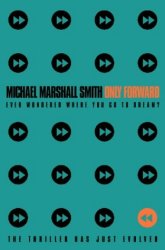
The arrangement of the City's "Neighbourhoods" in ONLY FORWARD recalls Thomas Pavel's concept of "ontological planning" (1986) which "aims at avoiding or at least appeasing the inevitable clash between opposite world models" (141). Neighbourhoods such as Sound, where silence is the norm apart from one hour a day, or Red, where everything has to be in the titular colour, co-exist. Travellers may pass through them (apart from closed Neighbourhoods like Stable) so long as they observe the local protocols when they do so.
As Brian McHale observes, "Pavel's account of ontological landscapes [ . . . ] converges strikingly with certain analyses of the social construction of reality from a sociological perspective (1987: 37)". Specifically, McHale mentions the work of Peter L. Berger and Thomas Luckman who "regard reality as a kind of collective fiction, constructed and sustained by the processes of socialisation, institutionalisation, and everyday social interaction, especially through the medium of language" (37-8). Life in the City, however, is less a 2collective fiction" than a collection of fictions.
In Pavel's terms, the organisation of the City is "nihilistic" because "Nihilism assumes that the simultaneous presence of several world models cancels the credibility of each model. Their multiplicity stands to prove that all are fictitious, and the choice between these fictions is made according to purely utilitarian criteria" (142).
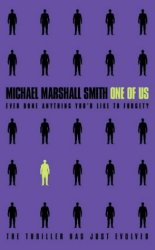
In other words "nothing is true, everything is permitted". This is Burroughs' description of the way of life in Naufana and Ghadis, the final two (of six) Cities of the Red Night, which are "cities of illusion" (1989, 159). All is dream, is fiction in Naufana and Ghadis; nothing is "realer" than anything else. Like the City in ONE OF US, they are heterotopias – Michel Foucault's term for spaces in which a multiplicity of perspectives, or ontologies, co-exist (1988, 24) – and this is why they are dangerous to what Foucault terms "Power" and Burroughs calls "Control".
Stable, which "still has neighbourhoods with a small n" (1998: 61) is by contrast, "nostalgic", constructed around a "homesick[ness] for old times when ontological stability was still the rule" (Pavel, 1986: 142). As with Stable, Celebration's nostalgia is expressed in its architecture which, like the "characterful" Falkland Hotel in Griffith Park (Marshall Smith, 1998, 50), has been artificially aged. This process, which Ross calls "posterior dating" (10) is a simulation of history, of narrative. Indeed, some of the apartment buildings in Celebration's downtown area have been designed to "look like grand buildings that were later converted to use as apartments" in order to create the impression that the town has "grown up organically over time" (10).
Ross writes that early residents of Celebration "would spend a good part of their fledgling years here trying to convince the outside world that this was a 'real place' with real problems" (2). The "reality" of Celebration would be confirmed, to its residents at least, partly by the poor construction of the homes there (ironically, the term commonly used to describe such shoddy workmanship is "Mickey Mouse") and also through the "natural threats" the town experienced. These included attacks by deadly encephalitis-bearing mosquitoes and the presence of alligators in Celebration Lake and in residents' swimming pools (the alligators themselves are a product of Disney's landscaping, having been removed from the site of Disney World when building began). The visibility of wildlife in Celebration is sometimes desirable as in the case of the "[n]otable birds" that populate the "lavish parks" (13). In the case of the alligators (which are, of course, like the "wildlife" of Jurassic Park, saurians) and the mosquitoes however, their visibility contradicts Disney's desired representation of the town as an idyll in harmony with nature.
This representation is further undermined by the extreme weather conditions that severely damage the town. The presence of deadly fauna in Celebration and the consequences of adverse weather can both be seen, particularly in the context of the town's status as a "master-planned community", as acts of randomness. According to Coupland, Brentwood's existence is a "consensual denial of civic randomness and chaos" (1996: 162). Random events like the deaths of Marilyn Monroe in 1962 and Nicole Brown Simpson in 1994 disrupt the smooth running of the neighbourhood. Worse, they increase its visibility by attracting the attention of the mass media and of tourists (and raising the possibility that, rather than the "emulation of nature", celebrity death might become Brentwood's theme) which in turn adversely effects property values.
4. Safe Places
In Stable, random events occur – Stark witnesses a dispute over a parking space (1994: 61) – but nothing too disruptive. Even the weather is controlled. Stable can be seen as a "quarantine zone", Ross's term to describe Disneyland which was built, he writes, because of "Walt Disney's disgust for the postwar urban sprawl of Los Angeles (and his distaste for the lack of hygiene in other popular entertainment facilities) (4)". The notion of "hygiene" is significant in the representation of Stable. Stark's presence there is a contamination potentially every bit as catastrophic as the epidemic in 'Hell Hath Enlarged Herself'.
Describing the methods taken by seventeenth century towns to curb the spread of the plague, Foucault writes "Power makes itself everywhere present and visible; it invents mechanisms it separates, it immobilises, it partitions" (1991, 15). The result is the construction of "a counter-city or the perfect society" (16). This is the situation in Stable, even though the "plague" – nuclear radiation – does not really exist. The heterotopia of the City, however, does, and it is its existence, as a potential source of infections of randomness, which threatens those in Power in Stable.
"The plague," Foucault writes, "gave rise to disciplinary projects" whereas the treatment of the leper "gave rise to rituals of exclusion" (18). We can see both in practice in Stable: the very existence of the City is excluded from the Stable's residents' awareness so as to ensure a "pure community", which Foucault identifies as the "political dream" of the "exile of the leper". The "political dream" of the "arrest of the plague" is a "disciplined society" (20) and Stable surely has that; its residents are disciplined to believe that there is nothing but wasteland outside. Like the authorities of the plague-stricken town, the government of Stable "imposes an ideal functioning, but one that is reduced in the final analysis [ . . . ] to a simple dualism of life and death." To its residents, Stable is all there is. It is therefore, both a "perfect society" and a "pure community".
Foucault describes Bentham's Panopticon, itself a product of the "political dream" of a "disciplined society", as a "cruel, ingenious cage" (22). We might say the same thing of Stable, "nice" though it is. But this is to judge from outside the heterotopian context. If everything is true and everything is permitted in the City, then isn't the cultural fiction of Stable as acceptable as anything else? Stable is presented to us as simply another themed Neighbourhood in the heterotopia and Stark is non-judgmental about it, or at least about the "Stablents" who, he tells us "aren't kept in ignorance against their will. It's all they know, and it's all they want to know" (61). Stark, however, is an unreliable narrator who admits to various omissions in his telling of the story. Fragments of his memories interrupt the progression of the plot and we come to realise that he is hiding something from us, something that explains why he can enter the dreamworld of Jeamland.
Eventually, Jeamland is revealed to us to be a world constructed by Stark and his childhood friend Rafe. It is their "film", created by their "rejection of everything around", their "need" for something other, something better, than the real world. Like Stable, Jeamland is a euchronia; its named after the way "a four year old would pronounce 'dreamland'" (283) and visiting there replaces the "sense of wonder" that Stark has lost as he has aged.
The City is first explained as another "layer" of Jeamland although Stark later tells us "[t]he City wasn't another realm, It was the real world, only later, so much later." (307). Stark realises this when he is in the Neighbourhood of Idyll which, like Stable, appeals to his sense of nostalgia: "I liked it as soon as I set foot inside the wall. There was something so old about it, so gentle". (303) In the "oldest square in Idyll", Stark comes upon a "huge broken column of stone with an "acid-eaten statue" (303-4) which he recognises as the ruins of Nelson's Column. If we are to believe him, Stark has somehow travelled through time, from 1994, into the future. However, this scene's similarity to the ending of the classic paranoid science fiction film, PLANET OF THE APES (1967), where the discovery of the head of the Statue of Liberty on the beach reveals the planet to be a post-apocalyptic Earth and not an alien world, suggests that this claim may be another of Stark's fictions, one influenced by another fiction he has consumed.
Rafe is significantly absent from the early parts of the narrative. We later learn about his past with Stark and his involvement in the creation/discovery of Jeamland. Stark tells us that he and Rafe "saved" each other during childhood and adolescence by providing a mutual balance: Rafe is bold and badly behaved where Stark is reticent and obedient. They attempt to create a dreamworld as children but are unsuccessful until later in their lives when the "rest of the world" has disappointed and damaged them. Specifically, for Stark, the "breakage" (293) comes in his relationship with Rachel, a girl he meets and falls in love with during his first year at college. By his final year, Stark is "obsessed with Rachel [ . . . ] obsessed with our relationship" (293). He becomes:
so full of bitterness and distrust that I foresaw the worst in everything. I'd created my own world to live in, a world that was wallpapered with the colours of unfaithfulness and hurt. (292)
Rachel and Stark's relationship is itself a pocket universe, a "sad world" filled with "curdling love" (293). Stark becomes desperate to escape which leads him back to Rafe:
No woman had hurt him or let him hurt her, but the world had tried so hard to hammer him down. It had a little box waiting for him, and as everything he tried seemed to fail, he was shoehorned a little closer into his slot. (293)
Their shared disappointment, their shared wounds, allow them to create – or to find, depending on how much of Stark's narrative we accept – Jeamland. The personality differences between Rafe and Stark that allow them to balance each other out in the real world are still present in Jeamland. Rafe enjoys the wildness of Jeamland, its randomness. The City "bores" him but Stark prefers it there. It is "the kind of world I'd always wanted: interesting, but manageable, a place to be a mysterious outsider in" (302). They become incapable of returning to the real world. Rafe remains in Jeamland while Stark goes to the City, his explanation being "I needed something stable for a while" (302, emphasis added). Reality intrudes when Rafe confronts Stark about Rachel, with whom, we learn, he has had an affair. Rachel has had an abortion after learning about Stark's most recent infidelity and Rafe believes the child to have been his. Rafe assaults Stark in the City, then returns to the wilderness. The trauma of these events cause Stark to withdraw, from both of the worlds he has access to:
I just closed down for a while, and when I reopened for business I wasn't the same. I found someone else to be. You met him. (306)
All of ONLY FORWARD can be seen as a pocket universe generated by Stark's damaged consciousness and his narrative as an attempt to come to terms with the traumatic events he has experienced. For Foucault, heterotopias necessarily give rise to heterochronies as they can only function once there has been a radical break from the consensual understanding of time. Stark appears to have achieved such a break.
The "happy ending" (310) of the novel, in which he settles down in the City with a new lover can itself be read as another fiction, an act of wish fulfillment. As Stark says "it's working out very well. I think it will stay that way". (310, emphasis added).
5. Bad Places
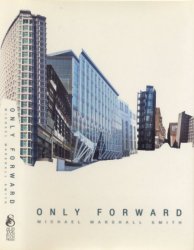
If it is the inability to deal with the consequences of past events that generates the worlds of ONLY FORWARD, then we can see anxiety about the future as the force that brings the nightmare territory of Marshall Smith's 'The Dark Land' into being. Like Stark, the (unnamed) narrator generates his world after leaving college and returning to his parental home and the bedroom "I'd grown up in" (1999, 313). The room is an anachronism, unchanged from his childhood, "very 1970s", and returning to it unsettles the narrator's sense of identity, of his place in time:
It still felt like I should be doing French verbs or preparing conkers, musing on what girls might be like. (313)
Feeling "a bit strange" after attempting to "breathe new life into a space I'd know since I was ten" (313), by moving his bed instead of filling out job applications, the narrator falls asleep. When he "wakes" the house has been transformed. At first it appears only to have been redecorated but as he moves through it other differences become apparent; the house hasn't so much changed as warped. Strange men – one a former school friend, another a "suited man" who seems to be a menacing authority figure – appear outside and come into the house, driving the narrator into the living room which he knows will itself inevitably shift and become part of "the dark land, the jungle" (337).
'The Dark Land' can be read as a horror story about space. The small space of the narrator's bedroom returns him to his childhood self. There is a degree of safety and security here but also a sense of reduction. The narrator's anxiety about life after college expresses itself in the warping of the larger space of the house, and then of the world outside which becomes the "dark land" and the uncertainty of adult life "the jungle". The childhood home is, Gaston Bachelard writes, "our first universe" (1969, 4) and we experience it, as all "sheltered beings" do "in its reality and in its virtuality, by means of thoughts and dreams." (5). Specifically, the house is the place where we daydream (for Bachelard, this is the "chief benefit of the house" (6)), an act which integrates "thoughts, memories and dreams":
Past, present and future give the house different dynamism's, which often interfere, at times opposing, at others stimulating one another. (6)
This is the situation the narrator of 'The Dark Land' finds himself in: his present state of anxiety over his future integrates with his memories of his childhood, of shelter and security, and corrupts them, creating the nightmare – or more accurately, day-mare – world of the "dark land".
Colleges and universities are, if not utopias, then certainly enclaves separated from the "real world" and the trauma of leaving them is surely familiar to any graduate (particularly those with Arts degrees). Part of life after graduation is, of course, attempting to find a place to live. In Marshall Smith's story 'The Owner', the experience of renting is transformed, warped, into something horrific. The protagonist Jane's anxiety about her lack of control of her life – she rents a flat and works freelance; her life, therefore, could be said to be unstable, or even un-Stable – creates, not a world, but a character, the Owner of the title, who invades her "territory", leading her ultimately to destroy it. Similarly antagonistic characters are also generated by an anxious character – a duplicitous lover who worries that he may have accidentally sent each of his two partners a letter intended for the other – in the story 'The Fracture'. This accident as the story's title suggests, damages the stability of the lover's well-ordered life by exposing the fictions he uses to maintain it.
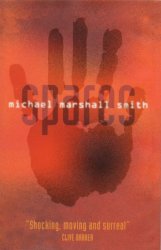
If random events such as accidents cannot be prevented in a "risk society", their consequences can nevertheless be managed. In Marshall Smith's novel SPARES (1996), set in a future where "[d]iseases, cuts, bruises" can "be dealt with pretty effectively" (42), the wealthy clone their children at birth. These cloned "spares" are kept in "Farms" and used to provide organs and limbs in the event that the "original" is injured. The company that operates the "Farms" is called SafetyNet and its existence informs the attitude of those fortunate enough to be able to afford its services; they achieve a sense of invincibility and behave recklessly, secure in the knowledge that, fatal accidents aside, nothing too bad, nothing irreparable, can ever happen to them.
(SafetyNet is similar to the Same Again Corporation in Marshall Smith's short story 'Save As . . .' which provides the service of "backing up" a client's life as a precaution against things changing for the worse. The story's narrator accesses the back-up of his virtually perfect life (including a "house that looked and felt like an advert for the American Way" (178) which recalls the architecture of Celebration) after he survives a car accident in which his wife Helena dies. However, randomness still effects the events of the narrative: the same rain storm that has caused the accident has flooded Same Again's offices with the result that his file is "corrupted" and his "new" life oscillates between being the way it was and a nightmare version in which Helena's infidelity with his friend has turned him into an alcoholic and drug addict. This is a version of his life as it could have been, an alternative earth, a parallel world.
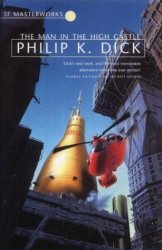
Discussing Philip K. Dick's parallel world novel THE MAN IN THE HIGH CASTLE (1962), in which the Axis powers win World War II, McHale writes "[i]nevitably, such a story invites the reader to compare the real state of affairs in our world with the hypothetical state of affairs projected for the parallel world; implicitly it places our world and the parallel world in confrontation." (1987: 61, emphasis added.) This is the situation experienced by the narrator of 'Save As . . .' as he moves uncontrollably between the two versions of his life, and it is what makes him contemplate suicide when the accident that has killed Helena inevitably repeats itself. Stark experiences something similar in ONLY FORWARD, except that his parallel world exists in his own world's future, or rather his fantasy of what that future would be like.
Jack, the narrator of SPARES, is a veteran of a war in a parallel world of a different kind, known as the Gap which has come into existence perhaps because of the collapse of the Internet, perhaps because of the invention of "collapsing code, a language based on the way the human mind itself was shaped" (1999: 198). The Gap is a product of "ambiguity":
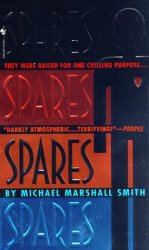
All the unspoken half-meanings we missed, the sly words, hidden implications; all of these it was said, added up to something and went somewhere else and created another place. (198)
Like the worlds described above, the Gap is a psychological projection, but this time the projecting mind belongs to an artificial intelligence. However, as Jack says the Gap might also be "something people had been looking for all along without realising what they might find"; he then describes it as the "world's subconscious" (199), a dreamworld produced by a Nature that includes both humans and machines.
Once discovered, the Gap is seen by the authorities as another territory to be exploited and is invaded by the military. The Gap responds by becoming a nightmare world peopled by dead children – reminiscent of the "babies", the spirits of aborted foetuses, that haunt Jeamland – who have been transformed into weapons. Like Jeamland, like the "dark land", like Wonder World, which becomes a nightmare version of itself as a result of Ricky's incursion, the Gap is "what you make it".
To cope with conditions in the Gap, the soldiers there are supplied with the drug Rapt which "intensif[ies] reality to the point of occlusion" (205). The drug Fresh in ONE OF US has a similar, if less extreme, effect: it defamiliarises the world to make it seem new and interesting. Both drugs are, to use Terence MacKenna's description of LSD (which served a similar purpose to Rapt in the Vietnam War) "contentless" (6), that is, they respond directly to the world that is already there, unlike the psychoactive plants that McKenna considers to be "technologies of the sacred" ( 8) which transport the user to other, alien worlds in order to impart some message or truth. If Rapt treats fear and anxiety, Fresh counters boredom
For Shaviro, drugs "are media in McLuhan's sense of the term: 'extensions of ourselves'" (2003: 185). We might say that Hap, the narrator of Marshall Smith's novel ONE OF US (1998) is also a medium. He is used by another character, Laura (who is also a regular user of Fresh), as an "extension" of herself. Hap is a "REMTemp": he has other people's dreams for them, or, as in Laura's case, their memories. Laura wants to forget, temporarily at least, a murder she has committed. Hap takes on her memory of the event and experiences it from her perspective, feeling her emotions, her anger, her guilt. For Hap, the memory is a virtual reality: he enters a world generated by Laura's (sub)consciousness just as Stark does with his own mind, or the narrators of 'The Dark Land' or 'The Owner' (Hap even describes memories as "little parallel universes". (43)).

